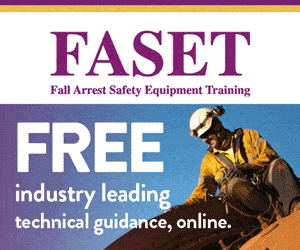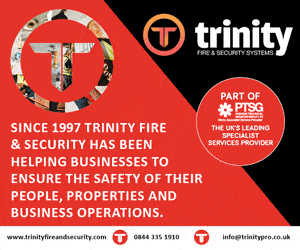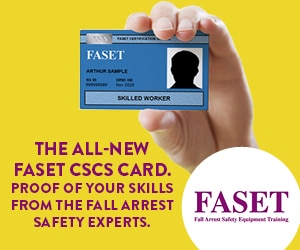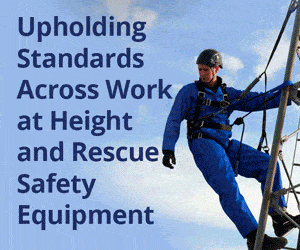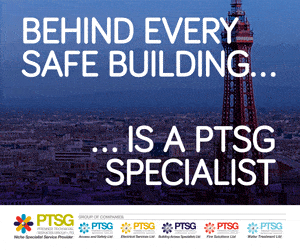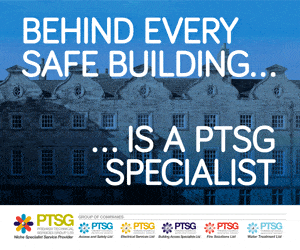Richard Stockley, Managing Director at leading health and safety training experts, RRC International, talks to us about TikTok’s influence on health and safety best practices, and the important role it has to play in protecting the next generation of health and safety workers.
According to Statista, TikTok is the fifth most popular social media network, with approximately 1.6 billion active users. It comes in just behind Facebook, YouTube, Instagram and WhatsApp.
Given it only officially launched in 2018, TikTok’s rise to prominence has been rapid and extraordinarily powerful. The fact that it was the highest-grossing app of 2023 really shows that the platform is moving from strength to strength.
One major factor in its success is its user retention. Indeed, the average TikTok user spends 95 minutes per day on TikTok and opens the app more than 20 times. This is more than any other social media platform. Combining this with the fact that 1 in 4 TikTok users are under 20 years old, it’s clear to see the impact it can have on the next generation of workers.
Positives and Negatives
TikTok content is paradoxical. You have both the good and bad, right at your fingertips.
Looking at the positives, you have a highly engaged audience that is looking to learn and be entertained. Running alongside this, you have micro-communities that actively share pertinent, useful content, on almost any topic you can think of. This is designed to amuse, interest and educate, and in the most part allow users to flourish. This includes 17.5k health and safety related videos, which boast more than 160 million views.
This all sounds excellent, but as with so many things, with the good comes the bad. With so much video content being shared, and not always by ‘industry experts’, the chance for misinformation or actively encouraging dangerous behaviour is a real concern. People value other people’s opinions highly, and rightly so, however it doesn’t mean they are always right. When it comes to something as critical as workplace health and safety, you need to be very clear on best practices, not just following the crowd.
Let’s assume that someone learns something new on site but does so incorrectly. They then take to TikTok to share their insight. This spreads the wrong learning to potentially thousands of people, who adopt it as best practice.
With platforms like TikTok, another danger is when content blurs the line between fact and humour in the search for more views, likes and shares. Relatable workplace humour, especially in deskless industries, such as construction, does perform well on the platform, however with this type of content, we are seeing poor examples of health and safety in the spirit of generating ‘watchable’ content. An example I have spoken about before is the video of a workman diving down a rubble chute in a rush to grab a pint. We all know that it isn’t pushing others to follow suit, and it is a bit of fun, but it will undoubtedly encourage others to try their own versions or try and one-up it with their own excursions on site. The line is fine, and even ‘funny’ videos are demonstrating behaviour that shouldn’t be tried at all.
The eternal debate here is whether this style of content negatively impacts the perception of people new to the industry or whether we can trust people to make their own, sensible decisions on what is fact and what is fiction. To me, I think the more extreme videos, and the ones that are just simply wrong, will have a negative influence on safety in the long term.
Creating Something Good
As I have said, TikTok skirts the good and the bad when it comes to health and safety content, and I feel strongly that social platforms have a responsibility to be better at removing incorrect or dangerous content where it can.
I am not saying that TikTok doesn’t flag content that could be deemed unsafe, but it doesn’t appear to be widespread, and certainly isn’t consistent. If this was rolled out more reliably, this could prove to be a fantastic addition to the platform to help contextualise and warn viewers for their own safety.
Outside of pranks, stunts and relatable work content, TikTok has also witnessed collaboration from H&S and HR professionals across the world, opening up the conversation around workplace safety to the online community. Here’s an example from Judith Fiddler, HR coach and trainer, offering her take on ‘occupational health no no’s’. While this will likely reach a relatively more niche audience, it demonstrates the opportunity that TikTok offers H&S professionals to create and engage with a community of peers.
TikTok’s Role in H&S
TikTok is undeniably a social media powerhouse and offers a great platform to share engaging work-related content. It goes without saying that, like most places online, it has its fair share of dangerous and concerning content. However, its role in helping to teach and lead by example is equally important in the world of H&S. This is what we need to engage with top, younger talent, encouraging them to consider health and safety as a viable career path. If we can minimise the bad and the ugly and accentuate all the good TikTok can do for the perception of health and safety, enhancing the industry’s education and knowledge, and making the workplace a safer environment for all, we have to try and harness it.






















